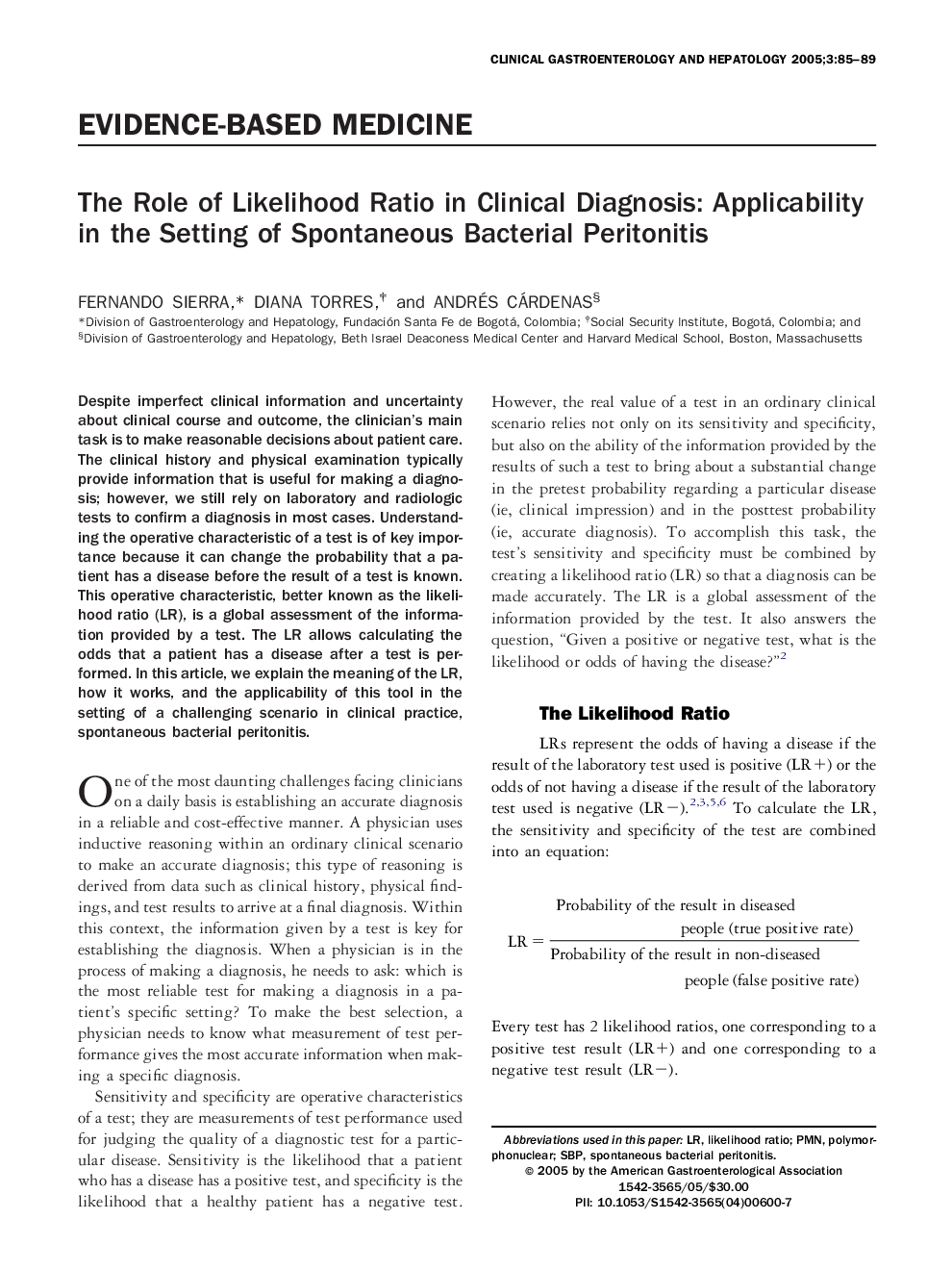| Article ID | Journal | Published Year | Pages | File Type |
|---|---|---|---|---|
| 9241963 | Clinical Gastroenterology and Hepatology | 2005 | 5 Pages |
Abstract
Despite imperfect clinical information and uncertainty about clinical course and outcome, the clinician's main task is to make reasonable decisions about patient care. The clinical history and physical examination typically provide information that is useful for making a diagnosis; however, we still rely on laboratory and radiologic tests to confirm a diagnosis in most cases. Understanding the operative characteristic of a test is of key importance because it can change the probability that a patient has a disease before the result of a test is known. This operative characteristic, better known as the likelihood ratio (LR), is a global assessment of the information provided by a test. The LR allows calculating the odds that a patient has a disease after a test is performed. In this article, we explain the meaning of the LR, how it works, and the applicability of this tool in the setting of a challenging scenario in clinical practice, spontaneous bacterial peritonitis.
Related Topics
Health Sciences
Medicine and Dentistry
Gastroenterology
Authors
Fernando Sierra, Diana Torres, Andrés Cárdenas,
